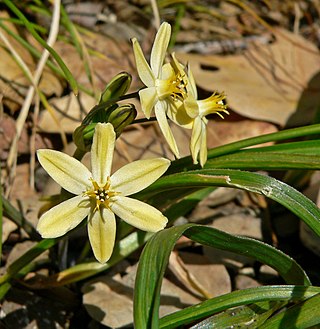
A language family is a group of languages related through descent from a common ancestor, called the proto-language of that family. The term family is a metaphor borrowed from biology, with the tree model used in historical linguistics analogous to a family tree, or to phylogenetic trees of taxa used in evolutionary taxonomy. Linguists thus describe the daughter languages within a language family as being genetically related. The divergence of a proto-language into daughter languages typically occurs through geographical separation, with different regional dialects of the proto-language undergoing different language changes and thus becoming distinct languages over time.

Substance abuse, also known as drug abuse, is the use of a drug in amounts or by methods that are harmful to the individual or others. It is a form of substance-related disorder. Differing definitions of drug abuse are used in public health, medical, and criminal justice contexts. In some cases, criminal or anti-social behavior occurs when the person is under the influence of a drug, and long-term personality changes in individuals may also occur. In addition to possible physical, social, and psychological harm, the use of some drugs may also lead to criminal penalties, although these vary widely depending on the local jurisdiction.
Calliprora is a genus of moths in the family Gelechiidae.

Polyhymno is a genus of moths in the family Gelechiidae.

Triteleia ixioides, known as prettyface or golden star, is a monocotyledon flowering plant in the genus Triteleia. It is native to northern and central California and southwestern Oregon, where it can be found in coastal and inland coniferous forests and other habitat. It is a perennial wildflower growing from a corm. It produces one to two basal leaves up to 50 centimeters long by 1.5 wide. The inflorescence arises on an erect stem up to 80 centimeters tall. It is an umbel-like cluster of several flowers each borne on a pedicel up to 7 centimeters long. The flowers are variable in size, measuring one to nearly three centimeters in length. They are pale to bright yellow, or sometimes purple-tinged white. There are six tepals with darker midveins in shades of green, brown, or purple. The lobes are funnel-shaped and may open flat or somewhat reflexed. The six stamens form a fused tube that protrudes from the corolla; they have broad, flat filaments and whitish, yellowish, or blue anthers.

Mompha is a genus of moths in the family Momphidae that was first described by Jacob Hübner in 1819. It has four subgenera.

Mompha sexstrigella is a moth in the family Momphidae. It has a Holarctic distribution. In Europe it is found in northern Fennoscandia and Estonia. It is also found in the Asian part of Russia, where it is known from the Altai mountains, southern Siberia and Sakhalin. In North America, it is found in Canada and the western United States.

Gelechiinae is a subfamily of moths in the family Gelechiidae. It was described by Henry Tibbats Stainton in 1854.
Calliprora rhodogramma is a moth of the family Gelechiidae. It is found in Brazil (Amazonas).
Calliprora tetraplecta is a moth of the family Gelechiidae. It is found in Peru.
Calliprora eurydelta is a moth of the family Gelechiidae. It is found in Peru.
Calliprora erethistis is a moth of the family Gelechiidae. It is found in Peru.
Calliprora peritura is a moth of the family Gelechiidae. It is found in Brazil (Para).
Calliprora pentagramma is a moth of the family Gelechiidae. It is found in Guyana.
Calliprora trigramma is a moth of the family Gelechiidae. It is found in Guyana.
Eudactylota diadota is a moth of the family Gelechiidae. It is found in North America, where it has been recorded from Arizona.
Eudactylota iobapta is a moth of the family Gelechiidae. It is found in Mexico and the United States, where it has been recorded from Arizona and Texas.
Eudactylota barberella is a moth of the family Gelechiidae. It is found in Mexico and the United States, where it has been recorded from Arizona, Colorado and New Mexico.






